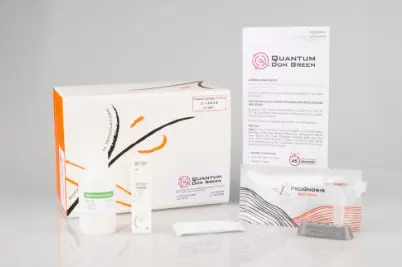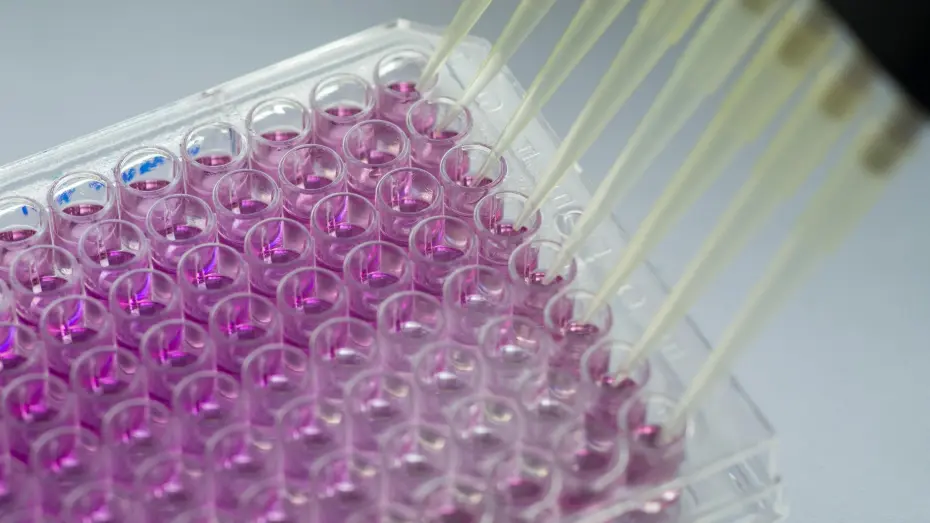SOLUTIONS
Here are the solutions tailored to your business needs.
Discover the ideal solutions designed to meet the unique needs of your business. Whether you're looking to optimize operations, enhance performance, or scale your growth, we provide targeted strategies that help you achieve your goals efficiently and effectively. Explore our comprehensive range of services tailored specifically to your industry and business requirements.

Dairy Antibiotics

Mycotoxins

Food Allergens

Hygiene Control

Learn More

Dairy Antibiotics
Dairy Products - Antibiotic Residues
To ensure the safety and quality of the dairy supply chain, strict standards have been established for antibiotic residues in raw milk. Antibiotics are used to treat bacterial infections in dairy cattle. While the use of antibiotics in dairy farming has significantly decreased in recent years, it is crucial to prevent any residues from entering the supply chain.
Antibiotic residues pose a potential health risk, as they can trigger allergic reactions and contribute to the development of antibiotic resistance. Additionally, fermentation processes may be affected, leading to production issues.
Rapid Test for Milk
The Rapid Test provides quick results in just 3 minutes with a single-step process. It offers high sensitivity for a variety of antibiotic residues. The test includes four channels for beta-lactams, tetracyclines, cephalexin, and ceftiofur residues. Milk samples can be easily added and results read using the convenient test cassette. This simple and effective test is ideal for OGR drivers, farmers, and milk reception staff to perform on-site testing efficiently.
Approved by ILVO 
The test is also compliant with the latest guidelines from the AFSCA and CNIEL, ensuring the highest standards of quality and safety in dairy testing.
ILVO conducted a validation study for this test. During the study, the detection capacity for the compounds listed in the test kit was determined. Other parameters assessed include selectivity and specificity, the percentage of false positive and false negative results, test result reproducibility, and robustness. ILVO provides an independent evaluation of test kits in accordance with current legislation, ensuring reliability and compliance with regulatory standards.
Aflatoxin M1 Detection
The feed provided to dairy cattle can contaminate milk with mycotoxins, with aflatoxin M1 being the most significant. As aflatoxin can be harmful to human health if exposed, the EU has established a maximum limit for its presence. Using a lateral flow test, you can quickly and easily conduct a quantitative test for aflatoxin M1. With the aid of a reader, the amount of aflatoxin M1 can be determined within the range of 15-150 ppt, which complies with European guidelines.

Mycotoxins
Mycotoxins Detection
Mycotoxins are toxins produced by certain molds. They are present in various foods and are not degraded by thermal treatments, such as heating. Due to their harmful effects on both humans and animals, it is crucial to detect the presence of mycotoxins in food products to ensure safety and compliance with health regulations.
The Six Most Common Mycotoxins
The six most common mycotoxins are as follows :

- Deoxynivalenol (DON)
- Zearalenone (ZEA)
- Total Aflatoxins and Aflatoxin B1
- Ochratoxin (OTA)
- Fumonisin (Fumo)
- T2/HT2 Toxins
These mycotoxins are often found in various agricultural products and can pose significant risks to both human and animal health. Detecting and monitoring their presence is critical to ensuring food safety and regulatory compliance.
QUANTUM Range

The QUANTUM range utilizes lateral flow technology in a cassette format, available for the following mycotoxins :
- Quantum Green – Total Aflatoxin
- Quantum Green – Deoxynivalenol (DON)
- Quantum Water Extraction – Deoxynivalenol (DON)
- Quantum Green – Ochratoxin
- Quantum Green – Fumonisin (Fumo)
The cassettes can be easily read using the 3PR reader, providing quick and reliable results for effective mycotoxin detection.
Mycotoxins Range
This range utilizes lateral flow technology in a strip format, providing a single extraction for all the mycotoxins listed below. Results are quantifiable in just 3 minutes when read with the 3PR reader.
Available Parameters :
- Deoxynivalenol (DON)
- Aflatoxin B1 (Aflatoxin B1)
- Total Aflatoxin (Afla Total)
- Zearalenone (ZEA)
- Fumonisin (FUMO)
- Ochratoxin (OTA)
- T-2/HT-2 Toxins
This efficient testing solution ensures rapid and accurate results, making it ideal for mycotoxin monitoring and food safety assurance.
ELISA Range
ELISA (Enzyme Linked ImmunoSorbent Assay) kits based on a competitive reaction. These reliable tests are designed to determine the presence and concentration of mycotoxins in your products.
Test kits are available for the six most common mycotoxins, providing accurate and trustworthy results for food safety and quality control.


Food Allergens
Food Allergens Detection
Detecting allergens in food is crucial to protect consumers with allergies. Additionally, current legislation must be adhered to in this area. Allergens are proteins that can trigger an immune reaction in certain individuals, ranging from mild symptoms to anaphylactic shock. It is essential that allergenic proteins are clearly and accurately listed on labels due to the significant risks they pose to consumer health.
The 14 Legally Designated Allergens

The 14 legally designated allergens are:
- Tree nuts (cashew, almond, walnut, pecan, pistachio, Brazil nut, macadamia nut)
- Hazelnut
- Celery
- Egg
- Fish
- Peanut
- Lupin
- Milk
- Mustard
- Sesame
- Crustaceans
- Soy
- Gluten
- Mollusks
The presence of allergenic proteins can be determined in various ways. To this end, we offer rapid tests and ELISA tests, which are specifically designed for detecting allergenic proteins in products, on surfaces, or in rinse water. These methods provide quick and reliable results, ensuring food safety and compliance with allergen labeling regulations.
Our Allergen Range
The Allergen range features a lateral flow test in a cassette format. This easy-to-use test provides results in just 5 minutes, ensuring quick allergen detection. With no risk of false-negative results, thanks to the overload line, this test offers high specificity and sensitivity.
Key Features :
- Rapid Results: Obtain results in 5 minutes
- No False-Negative Risk: Overload line ensures accuracy
- High Specificity and Sensitivity
- Room Temperature Storage: Kits can be stored at 4-30°C
- Quantitative Results: Results can be read with a reader or interpreted visually
This test is ideal for fast, reliable allergen testing in various environments, ensuring safety and compliance.
| Egg | Nut: |
| Peanut | Almond |
| Lupin | Walnut |
| Mustard | Pecans |
| Shells | Pistachio |
| Military | Brazil nuts |
| Gluten | Hazelnuts |
| Casein | Cashew nuts |
| β-lactoglobuline | |
| Milk | |
| Sesame (coming soon!) |
AllergenLine
The Allergen line includes Sandwich ELISA (Enzyme Linked ImmunoSorbent Assay) kits. This testing method is ideal for obtaining quantitative results within 30 minutes after sample extraction. The Sandwich ELISA method provides high sensitivity and specificity, ensuring accurate detection of allergens in food products, surfaces, and rinse water.


Learn More
Patulin
Patulin is a toxic metabolite produced by molds such as Penicillium and Aspergillus. It can be found on various species of moldy fruits and vegetables, with apples and their derived products being particularly susceptible to patulin contamination.
The toxic properties of patulin can affect various organs, including causing renal failure, pulmonary edema, and paralysis. Potential harmful effects on fertility have also been described, with patulin being considered a potential carcinogen.
Legal Limits for Patulin Contamination
The legal limits for patulin contamination have been established by the WHO and the European Union as follows:
- Apple juice and cider : 50 ppb
- Solid apples (including purees and applesauce) : 25 ppb
- Baby food products : 10 ppb
These limits are set to protect consumers from the toxic effects of patulin and ensure the safety of food products, especially those intended for vulnerable populations like infants.

Quantitative Test for Patulin Detection
A quantitative strip test allows for the detection of patulin in the matrices mentioned above. With a detection limit of 10 ppb, this test meets regulatory requirements. Sample preparation and a 9-minute incubation time mean that the entire process takes only 30 minutes.
A dedicated incubator is required for incubation, along with a strip reader for reading and quantifying the results.
Genetically Modified Organisms (GMOs)
Many countries have regulations regarding the cultivation, sale, and labeling of genetically modified (GM) crops. Rapid testing plays a crucial role in ensuring compliance with these regulations by quickly detecting the presence of GMOs in crops. This is particularly important to maintain the integrity of non-GMO or organic products.
CP4 EPSPS and Genetically Modified Organisms (GMOs)
CP4 EPSPS, or 5-enolpyruvylshikimate-3-phosphate synthase from the CP4 strain of Agrobacterium tumefaciens, is an enzyme associated with genetically modified organisms (GMOs), particularly those engineered to withstand herbicides. The introduction of the CP4 EPSPS enzyme allows farmers to use glyphosate-based herbicides to control weeds without damaging the genetically modified crops.

This innovation has made it possible to improve crop yields while minimizing the impact of weeds, making herbicide-resistant crops a significant advancement in modern agriculture.
CP4 EPSPS as a Genetic Marker in GMOs
The presence of CP4 EPSPS serves as a genetic marker indicating genetic modification. Crops that are genetically modified to include CP4 EPSPS include soybeans, corn, canola, cotton, and others. These crops are commonly known as "Roundup Ready" varieties, as Roundup is a glyphosate-based herbicide.
Lateral flow tests provide a fast and accurate solution for detecting these genetically modified crops, ensuring compliance with GMO regulations and maintaining the integrity of non-GMO products.
Reveal for CP4 EPSPS
With our CP4 EPSPS rapid test, distinguishing between GMO and non-GMO samples has never been easier.
A reading can be performed in just 5 minutes, making it ideal for testing corn and soybeans for genetic modification. This quick and efficient test ensures accurate results, enabling farmers and producers to comply with GMO regulations and maintain product integrity.
Histamine Detection

Histamine, a naturally occurring compound, is commonly found in certain types of fish and seafood. To ensure their safety and quality, we offer ELISA tests and Symmetric lateral flow tests, which provide quick and accurate analysis.
Our histamine detection kits have been validated by ILVO, ensuring compliance with industry standards and providing reliable results for effective food safety management.
Species Fraud in Dairy Products
Higher-priced milk with limited availability is often vulnerable to adulteration, where it is mixed with cheaper milk from other species. This practice compromises product quality and poses significant health risks, including allergic reactions.
Ensuring the authenticity of dairy products through precise testing is essential to maintain consumer safety and uphold product integrity.
Quantitative Lateral Flow Test for Milk Adulteration
We offer the first and only quantitative lateral flow test specifically designed to detect milk adulteration. With exceptional sensitivity, our test can identify adulteration levels as low as 0.1%.
These strip tests allow for the detection of milk from various species, including goat, cow, and buffalo, ensuring the authenticity of dairy products and protecting consumers from potential health risks.
